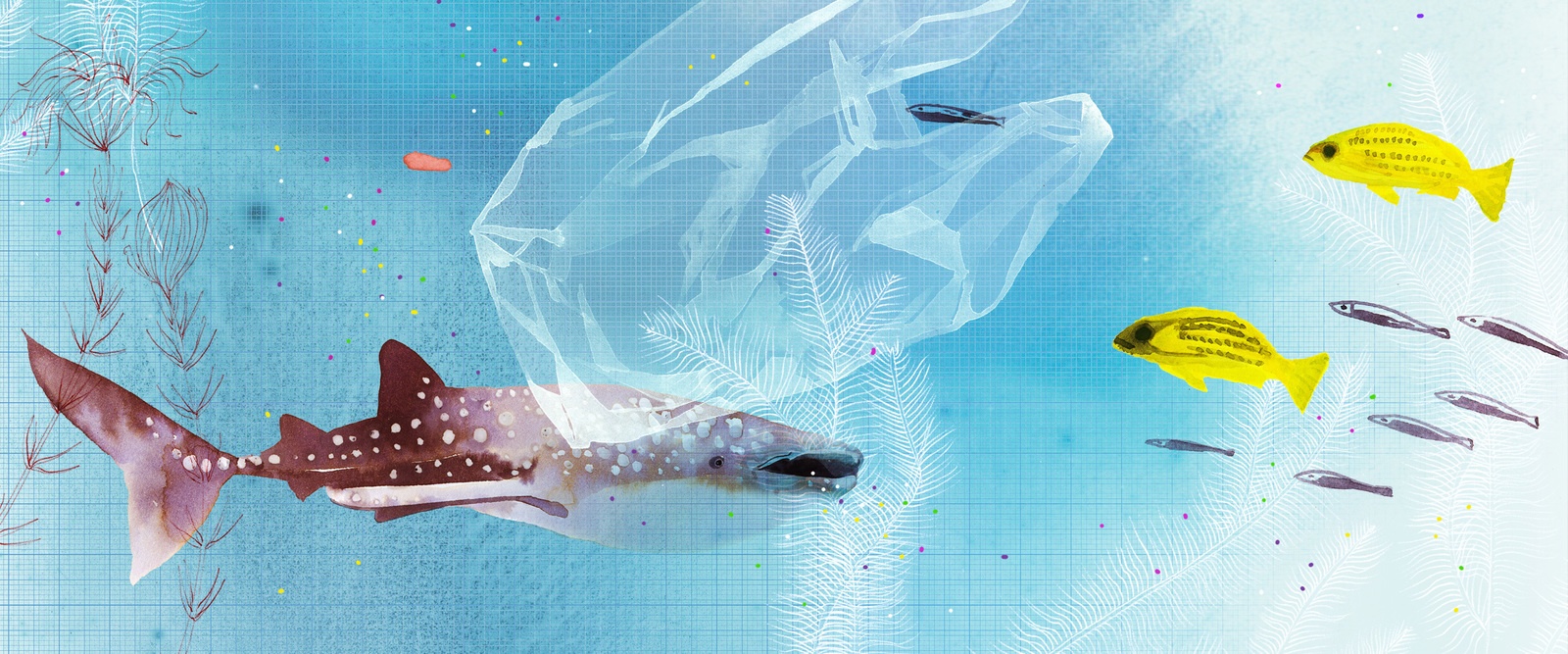Clean Water is the Basis of Life
Nowadays, the responsible use of resources is an important issue across society – from local municipalities and companies to private households. One of the most valuable raw materials is water. The aim here is to reduce consumption, treat and recycle waste water as much as possible, and avoid contamination. One of the major challenges, both now and for the future, is microplastics. We spoke with Leandra Hamann (Fraunhofer Institute for Environmental, Safety, and Energy Technology UMSICHT) about the opportunities of bionics and what washing machines can learn from caddis-fly larvae.


Where does your interest in water and microplastics come from?
For me, it was a classic case of really enjoying biology at school. My father also makes nature documentaries, which leads to lots of interesting discussions at home. Water has also always been my element – I started diving and surfing at a young age and I love to swim. Studying biology in Cologne was therefore the logical consequence of my experiences up to then. But during my studies, I felt that I was missing the practical benefits of the subject. It is interesting to identify species, to know how they are related and how they function, and to do basic research. But I was really interested in the question of how we – and society – could build on that. So I switched to the subject of bionics where we also study animals, but with the intention of finding out what we can learn from them. When it came to looking for a topic for my master’s thesis, I stumbled across the issue of microplastics. It wasn’t as hot a topic in 2014 as it is today, but the Fraunhofer Institute offered me the opportunity to work on filtration solutions. I was particularly fascinated by the combination of bionics and this environmental problem.

What is the approach that you are pursuing?
Suspension feeders filter floating particles, such as algae and krill, out of liquids for food, and can also ingest microplastics. So much would be gained if we could learn from them how to create filter mechanisms that prevent microplastics from getting into the water.
For my master’s thesis, I first researched which animals could be used as inspiration. Suitable candidates included mussels, sponges, whales, sea cucumbers and also flamingos. I then classified these species, chose 24, and sorted them according to biological and technical parameters. How does the respective filter mechanism work, which techniques are used, and what could we use? The whale shark, for example, has flow-optimizing structures in its mouth, the flamingo uses fine hairs, while the sea fan coral works with mesh size and flow resistance.
And how did you put this idea into practice?
In the next step, I thought about where the filter should be used and looked more closely at the washing machine. With an estimated quantity of 5,200 tonnes per year in Germany, synthetic textile fibers have a considerable impact on microplastics emissions. The key questions now were: how do the current filter mechanisms work, how should a microplastics filter be designed, and how much space is available? In a case study, I chose the caddis-fly larva, which stretches nets made of a silky material between stones and sticks in running water. The nets catch food particles which it can then eat. Initial calculations have shown that the material and structure would trap the fibers and withstand the flow conditions in the washing machine. But the process of implementing a caddis-fly filter is currently still too complicated. Other biological models are easier to apply, and this is what the Fraunhofer experts are currently working on.
This example shows that it is worth studying biological filtration mechanisms in more detail and working on their implementation in technology. That is why, starting this year, I will be working on my doctorate in bionic filtration concepts at the University of Cologne in cooperation with Fraunhofer UMSICHT. This research could be beneficial for sewage treatment plants, industrial filters, and cleaning systems in oceans. I am also still actively involved in microplastics research. I took part in the Runden Tisch Meeresmüll (round table on marine waste) and was invited to participate in discussion panels. It is very clear that there is an urgent need to get the situation under control.
In your opinion, how good are our chances of mastering the problem? Besides your own, do you know of any other approaches that seem promising?
It’s not an easy situation to judge. There are still many unanswered questions about microplastics and it is not yet possible to carry out a risk assessment. However, the fact remains that we must reduce the amount of plastic in the environment. It is an extremely complex problem – plastic is available all over the world and many parties are involved – so we must work together to get the situation under control. Consumers must understand that plastic is a recyclable material and act accordingly. Authorities must establish legal requirements that limit the use of certain materials and additives. Businesses must be proactive and use high-quality, durable and above all abrasion-resistant materials. And the scientific world must focus on researching topics such as bioplastics, recycling possibilities, and filtration mechanisms. This brings us right back to bionics. In my opinion, we can learn a lot from nature – and not just about filters.



